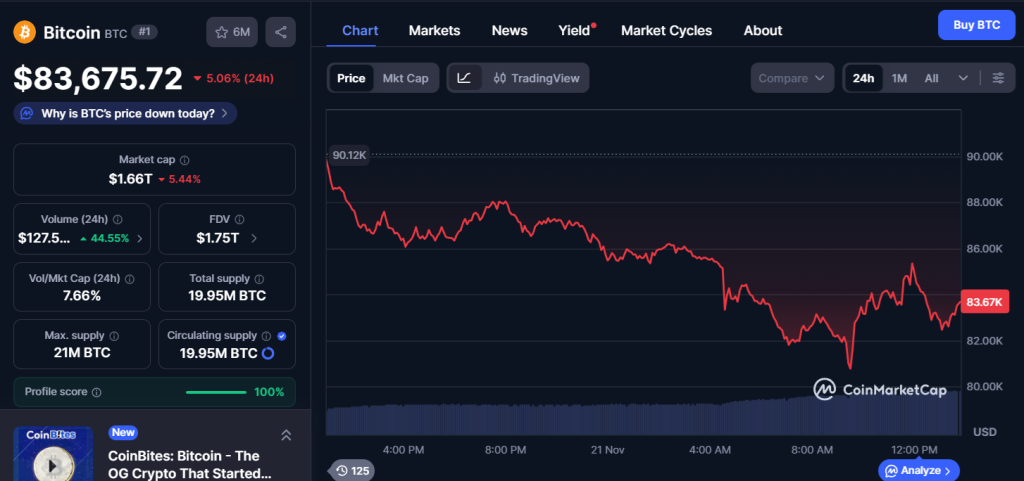TL;DR
- Trader Peter Brandt anticipates that Bitcoin’s price will only reach $200,000 in 2029, colliding with expectations of faster bull cycles.
- BTC has fallen from its all-time high of $125,100 to around $80,000 in thirty days, a correction of more than 20% that Brandt considers a healthy phase for fresh accumulation.
- The market shows a rotation of supply toward institutional actors, with $57.40 billion flowing into ETFs.
Veteran trader Peter Brandt presents an uncomfortable forecast for the crypto market: Bitcoin would only reach $200,000 in the third quarter of 2029.
The prediction clashes with far more aggressive projections from major industry figures who insist on a faster and steeper bull cycle. Brandt remains a long-term bull, but believes the market is going through a necessary phase to flush out excesses, reset expectations, and create real room for sustained growth.
Brandt Collides with Industry Forecasts
Bitcoin’s price fell from the all-time high of $125,100 recorded on October 5 to $80,000 in the latest session. The drop exceeds 20% in just thirty days and leaves BTC 34.61% below its ATH.
A Comparison Between Bitcoin and Soybeans
Brandt interprets the downturn as a healthy stage that removes weak leverage and prepares new accumulation levels. His analysis draws on historical cycle comparisons, particularly one from the soybean market in the 1970s, when prices climbed rapidly but demand could not keep up, leading to a drop of more than 50%. According to the trader, Bitcoin is forming a similar technical pattern known as a broadening top, which has historically signaled market tops before deep corrections.
These projections sharply differ from those maintained by other leading crypto figures. Brian Armstrong, CEO of Coinbase, and Cathie Wood of ARK Invest forecast Bitcoin at $1 million by 2030. The difference is not only in the number, but in the pace. Armstrong and Wood expect accelerated monetization, while Brandt argues that the market will need several additional years to absorb the structural changes now underway.
Supply Rotation
The market no longer depends solely on retail behavior. Bitcoin is changing hands. Historical holders are selling their coins during the pullback, while institutional capital is taking positions through funds, corporate treasuries, ETFs, sovereign funds, and regulated vehicles. CryptoQuant reported about $57.40 billion in cumulative net inflows into U.S. spot ETFs as of November 20. This flow is reshaping the ownership structure and transferring supply control to actors willing to hold BTC through longer cycles.
Michael Saylor stands as a symbol of that view. Strategy purchased 8,178 BTC for $836 million during the downturn and increased its total holdings to 649,870 BTC, with more than $6.15 billion in unrealized gains. The message is clear: the market is entering a transition where the long-term outlook determines who remains seated when the next leg of the bull cycle begins.













